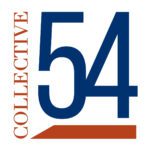Firms that add a great client experience to high-quality work reach scale, and those who do not, stay small lifestyle businesses. On this episode, we discuss the importance of the client experience to driving client satisfaction.
TRANSCRIPT
Sean Magennis [00:00:15] Welcome to The Boutique with Capital 54, a podcast for owners of professional services firms. My goal with this show is to help you grow scale and sell your firm at the right time for the right price and on the right terms. I’m Sean McGuiness, CEO of Capital 54 and your host. On this episode, I will make the case that there is a difference between quality work and a great client experience. Firms that add a great client experience to high quality work reach scale and those who do not stay small lifestyle businesses. I’ll try to prove this theory by interviewing Greg Alexander, Capital 54’s chief investment officer, Greg has helped many firms see the importance of the client experience. Greg, great to see you. Welcome.
Greg Alexander [00:01:19] Hey, Sean, good to be with you today.
Sean Magennis [00:01:20] Greg, I’d like to start by asking you, what is the difference between quality and client experience?
Greg Alexander [00:01:28] OK, so quality is measured by the finished product. So, for example, the quality of this podcast is determined by the quality of the recording. If the audience could not hear us clearly, this would be a low quality product. Client experience is measured by how a client feels when working with you. For example, I drive an old Cadillac which requires service. I love my dealership because when I show up, they remember my name. They greet me with a hot chocolate chip cookie.
Sean Magennis [00:02:01] Nice.
Greg Alexander [00:02:03] They have the vehicle history in front of them and they get me on my way quickly. They don’t just fix the car. Does this make sense?
Sean Magennis [00:02:11] Yes, it absolutely does. So why should a boutique professional services firm care about this?
Greg Alexander [00:02:19] Well, some should not care. So, for instance, firms who are not trying to scale can get away with ignoring this. However, for those listeners who are trying to scale, this is a must have not a nice to have. And here’s why. The reason is as you scale, you will attract more sophisticated clients. This is wonderful because they have bigger budgets and these clients are very profitable. However, they also have higher expectations. Chances are they have hired many professional services firms before and some of the best in the world. Their idea of what good looks like is very different. And if you don’t rise to the occasion, you will not be able to do work for these top companies. And if you cannot serve the top clients, you will never scale.
Sean Magennis [00:03:14] That makes complete sense. I would also add that one of the best things of scaling a firm is the opportunity to work with the best clients. The work is much more stimulating. So, Greg, what is a firm trying to scale really need to do?
Greg Alexander [00:03:31] So, they need to implement a client experience program.
Sean Magennis [00:03:35] Greg, what’s a client experience program?
Greg Alexander [00:03:37] Yeah, so that’s a big question. So I would ask you in the audience to bear with me as I attempt to answer this.
Sean Magennis [00:03:43] Got it. I know you’re going to do a great job.
Greg Alexander [00:03:45] OK. So a client experience program can be described as understanding the client journey and acting on it. So an illustration of a typical client journey is going to be helpful here. Usually a client journey starts when sales hands off the client to an engagement manager after a contract is signed. This is a delicate situation as the client will be leaving someone they have grown to know and are now being introduced to a stranger. Approaching the client at this moment takes skill as there is a heightened level of stress. Next, this handoff usually leads to some kind of project kickoff or a client onboarding process. It is critical the engagement team starts to build trust and credibility. This is done by keeping the effort level from the client very, very low. For example, the engagement manager should demonstrate that she has been fully briefed by sales and knows exactly what has transpired up to this point. Clients hate having to repeat themselves as they are very busy people. The project kickoff or client onboarding process lays out the goals and what’s going to transpire over the next few weeks or months. A great client experience always sets expectations and keeps the focus on outcomes and milestones. Clients hate uncertainty. After the onboarding or kickoff, the client begins adopting the early parts of the project. This is a great moment of stress as a client will be on a steep learning curve and no one likes to feel stupid. Be sure to recognize this insecurity and take action to replace their feelings of ignorance with some quick wins. The next part of a typical journey moves from early adoption to an expansion phase. This is where the client begins to use more advanced pieces of your solution. At this moment, clients are dealing with the fear of change. Getting a client to push beyond the basics and get more advanced is like trying to get someone to lose the last five pounds after losing the first one. Complacency sets in. Yet if you do not get the client to push through this, the full benefit of the project will not be realized. And lastly, the client enters the final stage of the journey. And this is project completion. It is important for the boutique to quantify the benefits of the project and to congratulate the client for a great job. This will result in a new client journey kicking off as another project starts up. Or if the project did not go well. This results in the parting of ways between the client and the boutique. Sean, that was a lot. But did you get the essence of it?
Sean Magennis [00:06:55] Yes, Greg, I did. And what struck me about this example is the emotional swings a client goes through along the way. This is a good reminder that how a client feels during the project is as important as what the client gets at the end,\.
Greg Alexander [00:07:13] You got it and notice in this example, I never once mentioned deliverables.
Sean Magennis [00:07:18] Yep didn’t.
Greg Alexander [00:07:19] You know, the quality of the work. And this is very typical. The client experience has nothing to do with the quality of the work.
Sean Magennis [00:07:26] Yes, I noticed that, Greg. And in my experience, many clients cannot tell the difference between average work and great work, but they sure can tell the difference between a bad experience and a great experience. Heck, they can feel it in the depth of their soul.
Greg Alexander [00:07:42] Yes, they can. And sophisticated clients demand a great client experience. As our listeners scale, they will be dealing with clients with higher expectations. So this becomes very important.
Sean Magennis [00:07:55] Absolutely. And now a word from our sponsor, Collective 54, Collective 54 is a membership organization for owners of professional services firms. Members joined to work with their industry peers to grow scale and someday sell their firms at the right time for the right price and on the right terms. Let us meet one of the collective 54 members.
Denise Lambertson [00:08:24] Hello, my name is Denise Lambertson and I own an agency called LMS. We serve the consumer packaged goods industry in the US that are distributing the brick and mortar retail as well as direct to consumer and e-commerce. These cries turn to ask for help with connecting with the consumer, whether it’s sales, community building, like social media growth or education and awareness. We solve this problem by the most effective celebrity and influencer marketing solutions. If you need help with building your influencer marketing program, reach out to me through www.wearelms.com. That is w-w-w-.-w-a-r-e-l-m-s.com.
Sean Magennis [00:09:06] If you are trying to grow scale or sell your firm and feel you would benefit from being a part of a community of peers, visit Collective54.com. OK, this takes us to the end of the episode, let’s try to help the listeners apply this. We end each show with a tool. We do so because this allows a listener to apply the lessons to his or her firm. Our preferred tool is a checklist and our style of checklist is a yes-no questionnaire. We aim to keep it simple by asking only 10 questions. In this instance, if you answer yes to eight or more of these questions, your client experience is working for you. If you answer no too many times a poor client experience is likely getting in the way of your attempts to scale. Let’s begin.
Sean Magennis [00:10:12] Number one, have you documented the client experience journey for your firm? Number two, do each of your clients feel that they are important to you? Number three, do you understand the emotional context of the client during the engagement
Greg Alexander [00:10:35] most often overlooked.
Sean Magennis [00:10:37] Yep. Number four, do clients know why you were doing what you were doing? Number five, do clients feel they are part of the engagement team?
Greg Alexander [00:10:51] Super important, the client needs to feel like you’re on their team and you’re pursuing their goals.
Sean Magennis [00:10:58] Number six, do clients know what is going to happen next before it happens?
Greg Alexander [00:11:03] Again, they hate uncertainty. Yeah, tell them what you’re going to do before you do it.
Sean Magennis [00:11:06] Communicate and overcommunicate. Number seven, do you research meeting attendees prior to each meeting? Number eight, do you send prereading material to clients with enough lead time?
Greg Alexander [00:11:22] This drives me crazy. You know, I hire service runners myself and they’ll send me a deck five minutes before the meeting. I want to strangle them.
Sean Magennis [00:11:29] Absolutely. Number nine, do you make it easy for clients to use your materials internally?
Greg Alexander [00:11:36] That’s the other thing. You know, sometimes people are proud of their work. So they they, you know, put their logo everywhere and they want to take credit. This isn’t about you. It’s about the client. So allow your client to plagiarize your work.
Sean Magennis [00:11:48] And they paid for it.
Greg Alexander [00:11:48] Yes.
Sean Magennis [00:11:49] Number ten, do you call the client after every meeting to confirm the goals were met?
Greg Alexander [00:11:55] Just good hygiene.
Sean Magennis [00:11:58] So in summary, quality work is a commodity that’s tough I know, for a lot of you to hear you are proud of what you produce and you should be. It took years to develop your expertize. However, some clients are not capable of recognizing your brilliance. And you are not the only firm, by the way, providing quality work boutiques that scale understand the client experience is much more important for fewer firms can deliver outstanding experience in addition to quality work. This is the unique differentiator to develop in the scale stage. If you enjoyed the show and want to learn more, pick up a copy of Greg Alexander’s book titled The Boutique How to Start Scale and Sell a Professional Services Firm. I’m Sean Magennis. Thank you, Greg. And thank you to our audience for listening.

